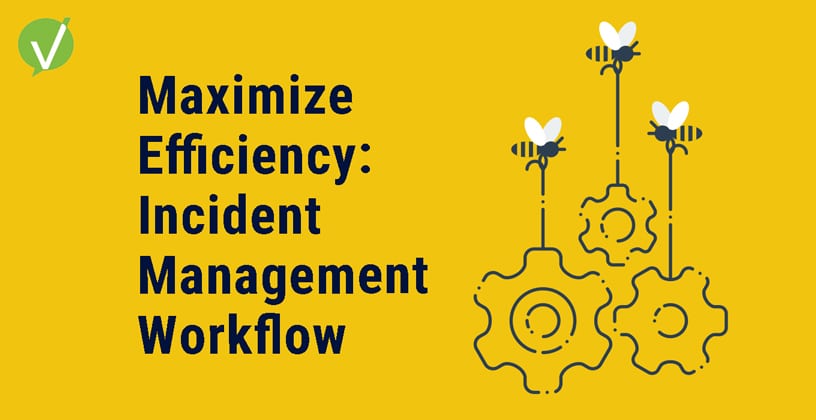Maximize Efficiency with an Incident Management Workflow
Introduction
Today’s businesses rely heavily on their IT infrastructure to help resolve the incident at hand. However, unexpected disruptions can occur, leading to significant downtime and business losses. To ensure smooth operations and minimize the impact of these disruptions, it is crucial to have an efficient incident management workflow in place. This article will guide you through the key steps and best practices of incident management, enabling you to maximize efficiency in your response to IT incidents and service management.
Key Takeaways:
- An incident management workflow is essential for effectively addressing IT disruptions and minimizing downtime.
- Implementing incident management best practices, such as those outlined in ITIL, can streamline incident response and resolution.
- The key steps of an effective incident management workflow involve incident identification, categorization, prioritization, and closure.
- An efficient incident management workflow offers benefits such as faster incident resolution, compliance implications, and improved incident tracking.
- By optimizing their incident management process, organizations can ensure business continuity and minimize the impact of IT disruptions.
Why is Incident Management Important?
Incident management is a critical process for effectively addressing IT disruptions or incidents within an organization. Following best practices, such as those outlined in the ITIL framework, ensures a prompt response and resolution. The incident management workflow involves several stages, including incident identification, categorization, prioritization, and closure. By implementing this workflow, organizations can streamline their incident response and prevent minor incidents from escalating into major disruptions. The service desk plays a key role in incident management, acting as the central point of contact for reporting and managing incidents.
Effective incident management is crucial for maintaining the overall functioning of a company’s ITSM roadmap and ensuring minimal downtime. Major incidents can have a significant impact on business operations, resulting in financial losses and reputational damage. By categorizing incidents based on severity and priority, organizations can allocate resources appropriately and focus on resolving major incidents swiftly. Incident closure involves identifying the root cause of the incident and implementing measures to prevent similar incidents in the future. This proactive approach to incident management helps optimize service restoration and minimize the impact of IT disruptions.
Implementing incident management best practices, such as those recommended by ITIL, provides organizations with a structured approach to handling incidents. This framework ensures consistency and alignment with industry standards, allowing organizations to manage incidents effectively and efficiently. By adopting incident management as a standard practice, organizations can strengthen their incident response capabilities, improve customer satisfaction, and enhance their overall IT service delivery.
From Chaos to Calm: How Incident Management Streamlines Your IT Operations
Improved Service Delivery:
- Minimized downtime: Faster resolution means quicker service restoration and less disruption.
- Enhanced customer satisfaction: Prompt response and resolution lead to happier customers.
- Stronger incident response capabilities: Proactive approach ensures efficient handling of issues.
Reduced Impact of IT Disruptions:
- Reduced financial losses: Minimized downtime and faster resolution save money.
- Prevented reputational damage: Efficient incident response protects your brand image.
- Optimized resource allocation: Prioritization allows focus on critical issues first.
Proactive and Effective Approach:
- Root cause analysis: Identifies and addresses the underlying problems.
- Preventive measures: Fewer future incidents due to proactive solutions.
- Structured approach: ITIL best practices ensure consistency and efficiency.
- Industry standard: Aligns with industry best practices for optimal results.
Additional benefits:
- Increased productivity
- Improved operational efficiency
- Enhanced decision-making
The Importance of Incident Categorization
Incident categorization is a crucial step in the incident management process. By categorizing incidents based on predefined criteria, organizations can prioritize and allocate resources appropriately. This allows for a more efficient response and resolution, ensuring that critical incidents receive the necessary attention and resources. Incident categorization also helps in analyzing incident trends, identifying recurring issues, and implementing proactive measures to mitigate future incidents. A well-defined incident categorization structure lays the foundation for an effective incident management workflow.
Incident Management Categorizations:
- Service Category: This represents the impacted service (e.g., email, network, application).
- Severity: This indicates the urgency and business impact of the incident (e.g., critical, high, medium, low).
- Source: This identifies where the incident originated (e.g., user report, automated alert, system log).
- Category: This specifies the type of incident (e.g., hardware failure, software bug, configuration error).
- Resolution Time: This shows the average time to resolve incidents in each category.
- Trend Analysis: This depicts changes in incident frequency over time for each category.
- Location: Where the incident occurred (e.g., on-premises, cloud).
- Priority: The order in which incidents are addressed (e.g., first-come, first-served, impact-based).
- Top Causes: The most frequent root causes for incidents in each category.
- Resolution Code: The method used to resolve the incident (e.g., workaround, patch, hardware replacement).
Incident Closure and Continuous Improvement
Incident closure is the final stage of the incident management workflow. It involves identifying the underlying cause of the incident and implementing appropriate measures to prevent its recurrence. Incident closure ensures that incidents are resolved in a comprehensive and permanent manner, minimizing the risk of future disruptions. Additionally, incident closure provides an opportunity for organizations to review their incident management process, identify areas for improvement, and implement corrective actions. Continuous improvement is vital in incident management, as it allows organizations to enhance their response capabilities and better prepare for future incidents.
Key Benefits of Incident Management |
|---|
| Optimized incident response and resolution process |
| Minimized downtime and improved business continuity |
| Enhanced customer satisfaction and service quality |
| Improved incident tracking and documentation for compliance |
| Identification of root causes and proactive incident prevention |
Steps Involved in an Effective Incident Management Workflow
An effective incident management workflow consists of several key steps that help resolve incidents in a timely and efficient manner. By following these steps, organizations can ensure a structured and effective approach to incident management.
Step 1: Incident Reporting and Logging
When an incident occurs, it is essential to promptly report and log all relevant information. This includes details such as the nature of the incident, the individuals involved, and any relevant timestamps. Logging incidents accurately and comprehensively in an incident log enables future reference and analysis to identify patterns, track recurring incidents, and facilitate continuous improvement in incident management processes.
Step 2: Incident Identification and Categorization
After an incident is reported and logged, the incident manager takes charge of the situation. Following the ITIL incident management process, the incident manager evaluates the incident and determines its impact. This involves identifying the root cause, understanding the extent of the incident’s impact on services and stakeholders, and categorizing the incident based on predefined criteria. Clear incident identification and categorization ensure that incidents are appropriately prioritized and assigned for resolution.
Step 3: Incident Prioritization and Escalation
Once incidents are categorized, they must be prioritized based on their severity, potential impact on business operations, and criticality to the organization. Effective incident prioritization allows for the allocation of resources and efforts accordingly, ensuring that critical incidents receive immediate attention and resolution. If necessary, incidents can be escalated to higher levels of management or specialized teams to expedite resolution and prevent further disruption.
Step 4: Incident Resolution and Service Restoration
Incident resolution involves the actual troubleshooting, diagnosis, and resolution of the incident. The incident manager, along with relevant stakeholders and technical teams, work together to identify the best course of action and implement the necessary measures to restore normal service operations. Throughout the resolution process, clear communication channels and collaboration among teams are crucial to ensure effective incident resolution and minimize the impact on business functions and end-users.
Step 5: Incident Closure and Reporting
After the incident has been successfully resolved, it is essential to formally close the incident and document the details in an incident report. This report captures essential information such as the timeline of events, actions taken, lessons learned, and any follow-up actions required. Incident closure and reporting provide valuable insights for future incident management and help drive continuous improvement in IT service delivery.
By following these steps in an incident management workflow, organizations can effectively handle incidents, optimize service restoration, and ensure minimal disruption to business operations. Implementing best practices outlined in the ITIL framework and leveraging incident management tools and technologies further enhances the efficiency and effectiveness of incident management processes.
The Benefits of an Efficient Incident Management Workflow
Implementing an efficient incident management workflow offers several benefits for organizations. Firstly, it speeds up the resolution process, minimizing downtime and ensuring business continuity. By following incident management best practices, organizations can effectively diagnose the incident and identify its root cause, allowing for a more precise and permanent solution.
Additionally, efficient incident management ensures the proper tracking and documentation of incidents, which is essential for compliance purposes and future analysis. Incident data, including the details of the incident and the steps taken for resolution, can be securely stored and accessed when needed. This not only helps organizations meet compliance requirements but also facilitates post-incident analysis to identify patterns, trends, and areas for improvement.
Furthermore, an efficient incident management workflow, aligned with the ITIL incident management framework, provides a standardized approach for handling incidents. This ensures consistent and effective incident resolution by following a predefined set of steps.
Ready to promote collaboration among IT teams and enhance communication with stakeholders, leading to faster incident resolution and improved customer satisfaction? Connect with our expert team and schedule a personalized consultation to discuss your unique needs. Sign up for a free demo and experience the power of Vivantio firsthand. Take control of your incidents today!.














